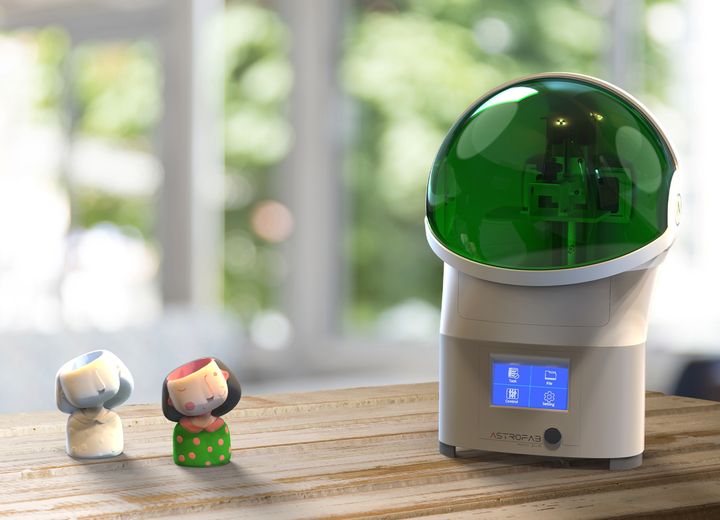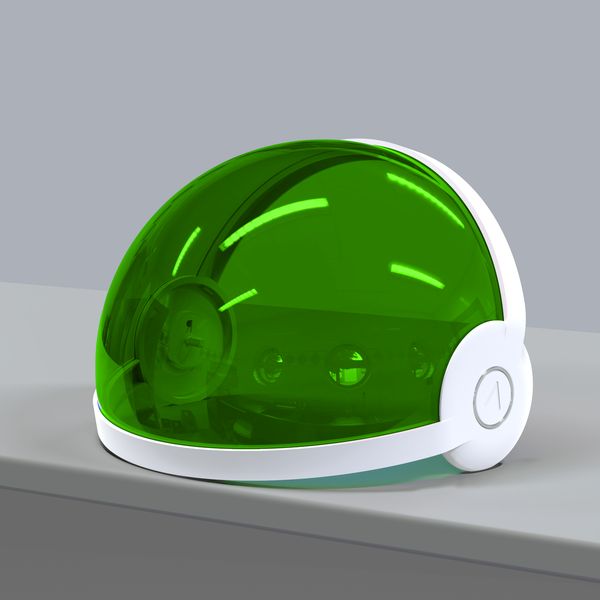
A new 3D printer is apparently coming soon, and it seems to be targeting a different set of users.
I don’t know much about San Diego-based AstroFab, other than they seem to have registered their domain only a year ago, and they have a mostly blank website. But they have just sent out a mailing that very briefly describes their project.
However, their name seems suspiciously similar to the more familiar AstroPrint, makers of a proprietary set-top box we’ve often written about. In fact, AstroFab, AstroPrint and its owner 3DaGoGo are all based in San Diego. I’m therefore assuming AstroFab may be another 3DaGoGo venture.
Their 3D printer is a resin-based “MSLA” device, which means they’re using an LCD panel to mask light for each printed layer. This is a very common approach for low-cost resin 3D printers.
AstroFab describes their system:
“AstroFab is the next generation MSLA 3D printer. No more muted, impractical and impersonal experience. Enjoy one of the fastest MSLA 3D printers with unparalleled print quality that puts a smile on your face every time you use it. AstroFab is wireless with a built-in HEPA+Carbon filter and a 2K monochrome LCD screen.”
Let’s take this apart.
- MSLA isn’t a new technology, and in fact it’s been used for many years for low-cost devices; recently producers have been slowly moving to 4K screens for added resolution. Nothing surprising here.
- Wireless connectivity is a bit rare on low-cost resin 3D printers, although it has become more commonly found on FFF devices. Again, nothing spectacular here.
- The “built-in HEPA+Carbon filter” is rare on resin 3D printers, but again, I’m beginning to see them appear more frequently.
- The build volume of 120 x 65 x 150 isn’t particularly notable and is similar to many other LCD-based 3D printers.
After looking at the rest of the specifications, it’s hard to see how the AstroFab might be a superior technical option.
Slicing is done via AstroPrint, naturally. But this is a tool that can be used with almost any desktop 3D printer.
But there’s a lot more going on here.

The market is currently flooded with low-cost resin 3D printers. I can’t even walk across the lab without stepping on one.
This is because the devices are pretty simple mechanically, even when compared to bare-bones FFF devices. They can be made at very low cost and produce pretty decent output.
So far the market has been a kind of “race to the bottom”, where features are slowly added and prices are slowly lowered. Currently I’m testing a low-cost unit you’ll hear more about, but it fits right into this envelope: value for money.
But in the case of AstroFab, it seems they are taking an entirely different strategy, and that might be a good idea given the massive competition racing to the bottom.
AstroFab is using aesthetics. They’re trying to make the machine look and feel good.
There are associated resins for the AstroFab, called, as you might guess, AstroResins. These are typical photopolymer resins, but are “eco-friendly” and “contain no VOCs, no BPA and no hazardous substances.” That’s something unusual, as I have yet to see any resins with these characteristics.
This is entirely different from the “race to the bottom” approach used by virtually every other resin 3D printer manufacturer. Consider these points:
- The AstroFab machine will come in different “vibrant” colors
- It uses a totally unique spherical chamber cover they call “visors”
- It has a curvy shape that’s clearly created by a professional industrial designer
- Their sample prints are of tiny AstroFab-like characters
- The air filters and resin formulations address personal safety needs.

AstroFab describes the “visors”:
“Each AstroFab comes with an AstroVisor which is a large visor in order to enclose the machine, reduce UV light, and conveniently let you monitor your prints. AstroVisor is available in four vibrant colors for you to choose from: blue, green, orange, and yellow. To customize your AstroFab, AstroVisors are easily interchangeable for your unique lifestyle. Changing AstroVisors is done quickly and effortlessly. Each AstroFab comes with a color of your choice and other colors can be purchased separately. Why not collect all 4 colors for different spaces.”
Clearly they’re targeting a group of users that isn’t the typical DIY or professional segments with this combination of features. In other words, they may be looking to push resin 3D printers into the consumer market, something that really hasn’t been done yet.
This could really work, as the machine definitely looks very cool.
I’m quite curious to see how this proceeds. If you’re interested, please hit their site, where you will find a way to receive “30% off” the price of the machine when it is released.
Via AstroFab and MyAstroFab
